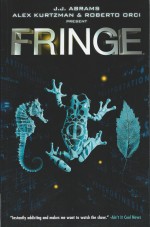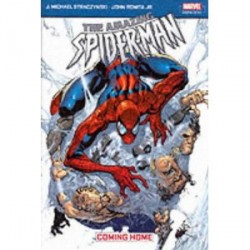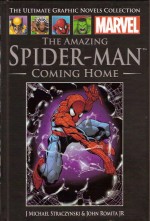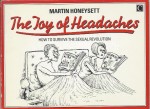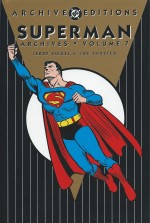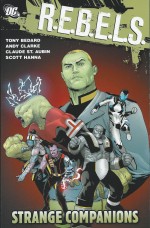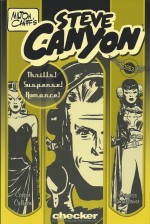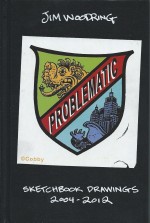
By Joe Kelly, Fred Van Lente, Zeb Wells, J.M. Dematteis, Phil Jimenez, Michael Lark, Marco Checchetto, Phillippe Briones, Max Fiumara & various (Marvel)
ISBN: 978-0-7851-4618-6
Outcast, geeky school kid Peter Parker was bitten by a radioactive spider and, after seeking to cash-in on the astonishing abilities he’d developed, suffered an irreconcilable personal tragedy. His beloved guardian Uncle Ben was murdered and the traumatised boy determined henceforward to always use his powers to help those in dire need. For years the brilliant young hero suffered privation and travail in his domestic situation, whilst his heroic alter ego endured public condemnation and mistrust as he valiantly battled all manner of threat and foe…
During this continuous war for the ordinary underdog, Parker has loved and lost many more close friends and family…
Following a particularly hellish period when a multitude of disasters seemed to ride hard on his heels and a veritable army of old enemies simultaneously resurfaced to attack him (an overlapping series of stories comprising and defined as “The Gauntletâ€), Parker’s tidal wave of woes was revealed to be the culmination of a sinister, slow-building scheme by the surviving family of one of his most implacable foes – and one who had long been despatched to his final reward.
Of course in comics death is far from The End…
Collecting material in whole or in part from Amazing Spider-Man Extra! #3, Web of Spider-Man #7, Amazing Spider-Man #634-637 and the Grim Hunt Digital Prologue (cherry-picked from 2009-2011) this powerful and portentous tome opens with ‘Gauntlet Origins: Kraven – Bride of the Hunter’, written by Fred Van Lente and illustrated by Phillippe Briones, and reveals how decades ago, Russian émigré Sergei Kravinoff – AKA Kraven the Hunter – met fellow refugee expatriate Aleksandra “Sasha†Nikolaevna and began a tempestuous relationship which took them together to the wildest corners of the earth. So drawn to each other were the bloodthirsty pair that not even inherited madness, paternal bonds and the laws of god or man could keep them apart…
‘Loose Ends’ (from Amazing Spider-Man Extra! #3 and by Phil Jimenez) is preceded by a text catch-up page revealing how years after the Russian’s’ death (See Spider-Man: Kraven’s Last Hunt), two successors and a third pretender to the name emerged. This latest was a psychotic 12-year old girl claiming to be the Hunter’s daughter and arguably the most dangerous creature the Wall-crawler had ever faced.
In a classic case of mistaken identity, Ana Kravinoff carefully trailed the Arachnid Avenger to his home but subsequently captured and tortured Parker’s roommate Vin Gonzales before escaping. Now, as Spider-Man finally finds her, the explosive, inconclusive confrontation results in more questions, extensive property damage but no real resolution…
‘Grim Hunt Prologue’ (Joe Kelly, Michael Lark & Stefano Gaudiano) commences the main event as Ana and Sasha are revealed to behind the prolonged Gauntlet of foes Spider-Man had recently faced. Moreover the driven Kravinoffs have also been targeting other Arachnoid champions, kidnapping clairvoyant Madame Web and latest Spider-Woman Mattie Franklin. As the weakened, near-exhausted Parker enjoys a rare moment of relaxation in the park, he is assaulted and tormented by an impossible psychic vision of death and worse awaiting him and all he loves…
The full drama unfolds next (from Amazing Spider-Man #634-637, crafted by Kelly, Zeb Wells, Michael Lark, Marco Checchetto & Stefano Gaudiano) – as second son Alyosha Kravinoff gloats over the grave of his dead brother Vladimir. There he is found and recruited by Sasha and Ana. They are planning something impossibly crazy in honour of the departed clan head…
Across town Peter is woken from a troubled sleep by the warped outlaw Kaine – a last surviving Spider-Man clone created by crazed geneticist Miles Warren from Parker’s stolen cells. The formidably terrifying former thug has been brutally beaten and warns Parker that something is hunting all the earthly avatars of the primal totemic Spider-force which actually gave the hero his powers…
Following explosions across town Spider-Man finds Julia Carpenter – the former Avenger dubbed Arachne – fighting for her life against Kravens Ana and Alyosha. Even acting in concert the web-slingers barely escape with their lives, since Parker is increasingly handicapped by psychic traumas and the incessant pounding of jungle drums only he can hear…
Whilst catching their collective breaths the heroes are approached by presumed-deceased Spider-Shaman Ezekiel Sims (see Amazing Spider-Man: Coming Home) who reveals the true nature of the peril they face. At the same time the debased Kravens mercilessly sacrifice one of their Spider captives to resurrect the dead brother Vladimir. However, although risen from the grave, he is no longer even remotely human…
A dark interlude than takes us back for an untold story of Kraven as ‘Hunting the Hunter: Adrift’ (J.M. DeMatteis & Max Fiumara) found the world-weary stalker forced to work for a cheapChicago gangster until his honour could stand it no longer. When he quit in his own spectacular manner, the infuriated mobster hired a mercenary named Kaine to teach the Hunter a lesson…
The Grim Hunt continues as Ezekiel informs Spider-Man and Arachne that the Kravens are exterminating all avatars of The Spider and that teenager Añya Corazon – a neophyte crimebuster calling herself Araña – is next. Rushing toCentral Park, the delirious, exhausted Spider-Man and his allies find her and Kaine battling Ana and the bestial Vladimir. Diving in, the battered hero is ambushed by Alyosha…
As Parker succumbs to some hidden hoodoo deployed by the hunters, the fiendish family flee with their new prizes Araña and Arachne whilst the wounded Kaine is barely able to contain the increasingly out-of-control and out-on-his-feet original Spider-Man.
When Ezekiel suggests recruiting the monstrous arachnoid avatars Venom and Anti-Venom, Kaine refuses to go along, leaving Parker to walk into a trap organised by Kravinoff allies Mysterio and the Chameleon. The subsequent hunt and calamitous conflict results in Spider-Man’s death and his life energies are used to achieve Sasha’s ultimate goal – the mystic resurrection of her husband…
The next flashback ‘Hunting the Hunter’ interlude is ‘A Prophecy’ (from DeMatteis & Fiumara) as Kraven and Kaine’s first clash goes badly for the debased Spider-clone before the overarching epic resumes with the revived Kraven clearly unhappy at being brought back and extremely disappointed with his far-from beloved family. As unnatural tension grips the entire city and the curs of clan Kravinoff come to blows, Kraven turns to his latest bloody trophy and reveals that the body concealed under the uniform is not Spider-Man…
When Parker revives from a drugged sleep and finds the clone’s body it is mockingly draped in the old white-on-black Spider costume, and pinned to the chest is a taunting note “hunt me!â€â€¦
Before the fateful, game-changing conclusion, a third ‘Hunting the Hunter’ chapter by DeMatteis, Emma Rois & Fiumara describes the savage ‘War’ between Kraven and Kaine, after which part four of the Grim Hunt follows the revenge-obsessed black clad web-spinner as he finally, terrifyingly ends the threat of the Kravinoffs and rescues the captive Spider avatars… or at least the last two the crazed Sasha has left alive…
As a new normal settles on the Spider survivors this tome uses the last ‘Hunting the Hunter’ chapter by DeMatteis & Fiumara to conclude the battle between Kaine and Kraven and offers a tantalising terrifying taste of the mystic power of the Spider force in the blistering ‘Burning Bright’…
Nihilistic, dark and bloody, this tale is a far cry from the Wall-crawler’s usual fare – which is not a bad thing – but suffers here from a surfeit of unaddressed backstory… which actually is. Nonetheless, the tale is frequently compelling and beautifully illustrated throughout so art lovers and established fans have plenty to enjoy. Moreover, the bleak and occasionally confusing Fights ‘n’ Tights thriller is graced with an abundance of art extras, covers and variants by Jelena Kevic Djurdjevic, Tom Coker, Michael Lark & Jodi Wynn, Mike Fyles, Joe Quinones, Leinil Francis Yu, Gabriele Dell’ Otto, Esad Ribic, Olivier Coipel, Mark Morales, Justin Ponsor, Michael Lark & Jodi Wynn and Marco Checchetto that will delight the eyes if not soothe those tired brain cells.
All in all, this is that oddest and most disappointing of ducks; a great story but an unsatisfactory book…
© 2009, 2010, 2011 Marvel Characters, Inc. All Rights Reserved.

